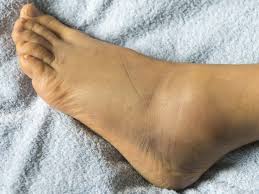

Below is a wonderful article from Texas Health Resources. This is a conversation that I have often with clients that have some nagging injuries. I really wanted to have this posted as a resource for all! Enjoy!
 Hard as it is to admit, we humans are prone to injury, and the more active we are, the likelier we are to hurt ourselves at one point or another. The good news is there’s an easy, safe and inexpensive way to treat the most common aches and pains — by simply applying heat or ice. So, here’s the million-dollar question: How do you know when to use ice and when to use heat? And will using the wrong therapy make matters even worse?
Hard as it is to admit, we humans are prone to injury, and the more active we are, the likelier we are to hurt ourselves at one point or another. The good news is there’s an easy, safe and inexpensive way to treat the most common aches and pains — by simply applying heat or ice. So, here’s the million-dollar question: How do you know when to use ice and when to use heat? And will using the wrong therapy make matters even worse?
We met recently with Elizabeth Batterton, M.D., a family and sports medicine physician on the medical staff at Texas Health Southwest Fort Worth and at Fort Worth Orthopedics, a Texas Health Physicians Group practice, to separate fact from fiction when it comes to soothing our injuries with heat and ice.
Acute injuries are best treated with ice to numb sharp pain and reduce inflammation. Ice works to calm down damaged tissues that are swollen and inflamed. It’s important to note that inflammation is a natural, healthy process of the body, but it’s also painful. Ice is a mild, drug-free method for dulling the inflammatory pain while reducing swelling.
 As a general rule of thumb, we recommend treating that pain for the first 72 hours, using the acronym RICE, meaning Rest, Ice, Compression and Elevation of the injured body part. This course of action will help slow down the inflammatory response that your body will naturally create following an injury. At the same time, it will decrease blood flow to the area and, ultimately, decrease the amount of swelling to speed up the healing process. We generally recommend 20 minutes on, 20 minutes off for ice treatment. Some injuries that are still actively swelling will require ice treatment longer than the initial 72 hours.
As a general rule of thumb, we recommend treating that pain for the first 72 hours, using the acronym RICE, meaning Rest, Ice, Compression and Elevation of the injured body part. This course of action will help slow down the inflammatory response that your body will naturally create following an injury. At the same time, it will decrease blood flow to the area and, ultimately, decrease the amount of swelling to speed up the healing process. We generally recommend 20 minutes on, 20 minutes off for ice treatment. Some injuries that are still actively swelling will require ice treatment longer than the initial 72 hours.
Heat helps soothe joints and relax muscles, and is used to treat chronic pain that doesn’t result from a specific injury. Heat reduces muscle aching and stiffness, and works by improving circulation and blood flow to a particular area. It can also increase muscle flexibility and promote healing of damaged tissue. Some good examples for heat-based therapy are chronic muscle strains, delayed onset muscle soreness (DOMS) and overworked muscles. In these cases, patients tend to see better outcomes versus using ice. Heat has a soothing effect on these injuries, and we recommend moist heat — from steamed towels or heating packs — in 10 minutes on, 10 minutes off increments.
 Are there common examples of treating household aches and pains incorrectly? Like using ice when heat should be used, and the reverse?
Are there common examples of treating household aches and pains incorrectly? Like using ice when heat should be used, and the reverse?Treating acute injuries with heat will have a negative impact on healing due to an increase in swelling and pain. This increase in swelling will decrease the range of motion in the area, and delays strengthening of the area to help it return to normal function and prevent future injury.
Regardless of whether the injury is acute or chronic, it’s important for patients to consult a sports medicine physician to get answers and advice about the injury. A physician can also diagnose a patient to ensure that more serious issues like fractures aren’t the source of the pain. Each case is different, but to complement heat or ice treatment, we often will recommend activity modification to allow the injury to heal, and consider physical therapy, pharmaceuticals, injections and regenerative medicine to help ensure the patient is back to his or her normal self.
If at-home treatments seem to keep falling short of alleviating your pain, it may be time to see a specialist. For more information about Texas Health Sports Medicine or to find a sports medicine physician, visit TexasHealth.org/SportsMedicine.